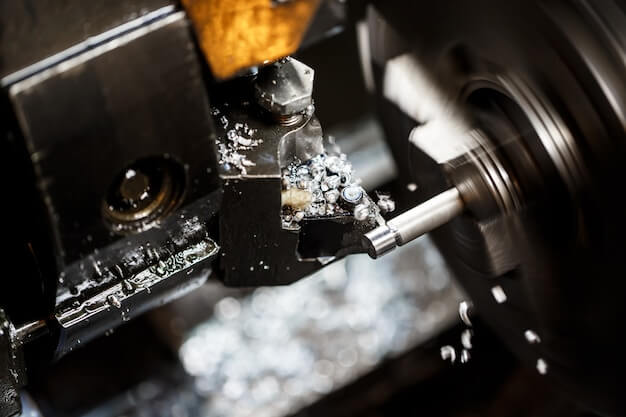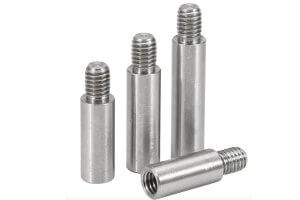Introduction to CNC Machinery and Core Differences Between CNC Lathes and Turning Centers
CNC (Computer Numerical Control) machinery represents the pinnacle of precision engineering, utilizing computerized systems to control machining tools such as drills, lathes, mills, and routers. These machines have revolutionized manufacturing processes by enabling high accuracy, repeatability, and efficiency in producing complex parts. At the heart of this technological evolution lie two prominent types of equipment: the CNC lathe and the CNC turning center. A crucial distinction between them is that a traditional CNC lathe primarily performs turning operations where material rotates against a cutting tool, while a CNC turning center often includes additional functionalities like milling, drilling, and sometimes even multi-axis capabilities which permit more diverse and complex shapes to be manufactured without repositioning the workpiece. Understanding the specific mechanisms and applications of each can significantly influence their suitability for certain production needs.
What is a CNC Lathe?
A CNC lathe is an advanced machine tool that performs precise cutting operations on various materials by rotating the workpiece against a cutting tool. It operates under computer numerical control (CNC), which allows for high-precision machining of complex parts with minimal human intervention. The essential functionality of a CNC lathe involves a chuck clamping the material, a spindle providing rotation at variable speeds, and a turret that holds a selection of cutting tools. As the raw material spins, the tools move along two axes—the X and Z—to cut the material to the desired shape and size. Common applications for CNC lathes span from creating simple cylindrical parts like screws and fittings to more intricate components found in aerospace, automotive, and medical industries. These machines are prized for their ability to deliver uniformity across large production runs while maintaining tight tolerances.
CNC Turning Center Explained
A CNC turning center is a sophisticated machine used extensively in the manufacturing industry for producing intricate parts through rotational cutting processes. Unlike basic CNC lathes, which are typically designed for straightforward turning operations, these centers come equipped with additional capabilities such as milling, drilling, and tapping functions. This allows them to perform multiple tasks on a workpiece without needing to transfer it to another machine, thus improving efficiency and precision. The CNC turning center often includes features like a turret that holds various tools, a sub-spindle for enhanced machining options, live tooling that enables non-rotational cutting actions, and Y-axis movement for off-center milling operations. By integrating these diverse functionalities, the CNC turning center stands out as a versatile solution capable of handling complex geometries and multifaceted production requirements.
Key Differences Between CNC Lathes and CNC Turning Centers
The distinctions between CNC lathes and CNC turning centers are pronounced, particularly regarding tooling capabilities, the complexity of parts they can produce, their production volume suitability, and operational flexibility. A CNC lathe is typically equipped with a single tool post, limiting its ability to handle complex tasks without manual intervention; this contrasts with a CNC turning center that often features multiple tool holders and live tooling options, enabling it to perform a wider range of operations like milling, drilling and tapping in a single setup. Parts of intricate design with numerous features may be better suited for processing on a CNC turning center because of these advanced functionalities. When considering volume and scale, CNC lathes are ideal for high-volume production of simpler parts due to their ease of use and faster set-up times, while CNC turning centers excel in smaller production runs where complex parts necessitate multifaceted machining capabilities. As for flexibility, the added features such as Y-axis movement, sub-spindles, and rotary tools found in most CNC turning centers provide manufacturers with greater versatility to adapt to diverse and evolving machining requirements.
Pros and Cons: CNC Lathe vs. CNC Turning Center
The use of a CNC lathe brings with it several advantages such as high precision in making symmetrical cylindrical parts, efficient production through automation, and the ability to perform various operations like cutting, drilling, and knurling. However, a CNC lathe can have limitations including its typically lower complexity for tooling which restricts the machine to simpler axis movements, thus catering primarily to tasks involving round or tubular shapes. On the other hand, opting for a CNC turning center benefits the user by providing additional functionality owing to features like live tooling, sub-spindles, and Y-axis milling, allowing for more complex geometries and multitasking capabilities; processes that might normally require multiple machines can be done on a single CNC turning center. The drawbacks include a higher cost due to increased sophistication, potential complexity in programming and operation, and larger footprint in the manufacturing space, possibly making it less suitable for smaller workshops where space and budget are limited.
Factors to Consider When Choosing Between a CNC Lathe and Turning Center
When selecting the appropriate machine for your manufacturing operations, it’s crucial to analyze specific production requirements and the complexity of the parts to be produced. A CNC lathe may suffice for simpler components, whereas a turning center provides additional axes and tooling for more intricate designs. Budgetary constraints also play a significant role; CNC lathes typically offer a cost-effective solution for those with limited funds. Additionally, space within your facility can dictate the feasible option since turning centers often demand a larger footprint than standard lathes. Finally, consider long-term machining capabilities; investing in a turning center might align better with aspirations for producing complex geometries and reducing secondary operations, streamlining production pipelines.
Industry Examples: CNC Lathes and Turning Centers in Action
In the aerospace industry, precision is paramount when fabricating components such as landing gear parts. A case study from this sector illustrates a CNC lathe application where high-strength alloy steel requires exacting tolerances. Here, the CNC lathe’s ability to perform accurate turning operations ensures that each piece meets stringent specifications for both dimension and surface finish. Conversely, in an automotive production line, manufacturers often opt for a CNC turning center to handle more complex tasks. For example, creating engine blocks involves not only turning but also drilling and milling. The integrated live tooling capability of CNC turning centers allows simultaneous multi-process machining, reducing cycle time and enhancing productivity without compromising on the precision required for these critical car components.
Conclusion: Selecting Between CNC Lathe and CNC Turning Center
In the comparison of CNC lathes and CNC turning centers, we have dissected their unique capabilities, such as the former’s adeptness for simpler cylindrical parts and the latter’s advanced multitasking prowess suitable for complex geometries. Moreover, the choice hinges on the desired production volume, precision, and investment feasibility. A CNC lathe excels in high-volume production of standard parts with its streamlined operation, while a CNC turning center offers versatility with additional axes and tools, catering to intricate projects that demand both turning and milling processes. Prioritizing your specific manufacturing requirements is paramount when selecting the appropriate machine; it ensures optimal efficiency and cost-effectiveness within your operational framework.
Reasons for Choosing a CNC Lathe Over a Turning Center
When faced with the decision between a CNC lathe and a turning center, the primary factors typically revolve around size constraints, operational simplicity, and cost-effectiveness. A CNC lathe generally has a smaller footprint, making it more suitable for workshops where space is at a premium. It’s designed to excel in performing straightforward turning operations without the added complexity of a turning center’s additional milling or drilling capabilities, simplifying both the machine operation and maintenance. From a financial standpoint, CNC lathes are often less expensive than their more complex counterparts due to their focused functionality, which may lead to significant savings particularly for small-scale production environments that primarily require basic turning tasks without advanced machining requirements.
Tooling Capacities of Standard CNC Lathes vs Advanced Models with Live Tooling
When examining the capabilities of a standard CNC lathe, it is typically designed for operations that revolve around turning and cutting materials. However, advanced CNC lathes are equipped with ‘live tooling’ capacities, allowing them to execute both milling and turning within the same machine cycle. This dual functionality transforms the CNC lathe into a more versatile workstation known as a CNC Turning Center. Live tooling refers to powered rotary tools that can perform drilling, tapping, or end-milling while the workpiece remains fixed in its rotated position. By integrating live tooling, manufacturers benefit from minimized setup times, reduced handling errors, and streamlined production processes, which leads to an increase in productivity and cost-effectiveness. An example would be incorporating a drill onto the turret of the lathe which can then activate to create off-center or cross holes, without necessitating a separate milling operation.
Training Requirements for Operating CNC Lathes and Turning Centers
The training required for operating a CNC lathe differs from that needed for a CNC turning center, primarily due to the complexity of the machinery and its operations. For a conventional CNC lathe, fundamental training is often sufficient, focusing on basic machine operations, tooling setup, part programming, and understanding of cutting parameters. In contrast, a CNC turning center, which may integrate additional capabilities such as milling, drilling, and sometimes even 5-axis movement, necessitates a more comprehensive educational program. Operators must grasp not only the core lathe functions but also complex machining processes, advanced programming techniques, and maintenance of multifaceted systems. While the basics of CNC operation are applicable to both machines, mastering a turning center typically demands enhanced problem-solving skills and deeper technical knowledge.
Other Articles You Might Enjoy
- What is a Lathe and How is it Used
What is a Lathe and Why is it Important? What is a Lathe? A lathe is one of the oldest and most versatile machine tools used in manufacturing and production…
- The Role of Precision in CNC Machining: How Tight Tolerances Impact Cost and Quality?
Introduction: Understanding Precision in CNC Machining In manufacturing contexts, precision is epitomized by Computer Numerical Control (CNC) machining. In essence, CNC machining is a process utilized widely within the manufacturing…
- The Role of Molybdenum Alloys in CNC Manufacturing: Are They Underutilized?
Introduction: The Definition, Functionality and Importance of CNC Manufacturing CNC (Computer Numerical Control) manufacturing is a critical method used in modern production processes. Defined broadly, it involves using pre-programmed software…
- CNC Machining of Biodegradable Materials for Sustainable Manufacturing
Introduction to CNC Machining and Sustainable Manufacturing CNC machining stands as a pivotal technology in modern manufacturing, utilizing computer-controlled processes to precisely shape materials. This method not only enhances efficiency…









